 Limehouse Chinatown Limehouse Chinatown
1860 - 1950
 Chinatown in Limehouse is as distant from us today as the planet Jupiter. Limehouse died under the rubble of V-2 Nazi rockets during world war two, but the history of London's Chinatowns has to begin in Limehouse. It seemed a natural place for Chinese to settle; it was located on the west side of the Thames. The docks brought opium and tea from Great Britain's far flung empire. Victoria's England had waged war twice against Qing China, forcing open its ports to its trade and taking Hong Kong as a prize and in treaty ports, it held the keys to import tax boxes, not to mention trading and other privileges and the rush of its missionaries to Christianize the heathen. Chinatown in Limehouse is as distant from us today as the planet Jupiter. Limehouse died under the rubble of V-2 Nazi rockets during world war two, but the history of London's Chinatowns has to begin in Limehouse. It seemed a natural place for Chinese to settle; it was located on the west side of the Thames. The docks brought opium and tea from Great Britain's far flung empire. Victoria's England had waged war twice against Qing China, forcing open its ports to its trade and taking Hong Kong as a prize and in treaty ports, it held the keys to import tax boxes, not to mention trading and other privileges and the rush of its missionaries to Christianize the heathen.
At first, Limehouse welcomed Chinese sailors, some originally from the port city of Tianjin or of Shanghai, who plied the seas. And from the sea came the first Chinese who settled in Limehouse in the late 1880's. There they took root and a Chinatown arose following more or less the traditional pattern of Chinatowns world over. Stalls, dingy shops, and stores selling food, herbs, and sundry other items which catered to Chinese tastes and fancies, and of course the ubiquitous Chinese laundries.
Chinatown had its clan associations and tongs, its own doctors and literati, yet Limehouse Chinatown had a cachet which other Chinatowns didn't. It was a society of men, for at first British authorities forbade Chinese women; two, Limehouse was a slum with its narrow buildings and foggy streets, and was known for its sordid pubs, brothels, restaurants, and opium dens. Thus, although it wasn't exactly as British imagine the mysterious East, it was foreign enough for the Londoner or foreigner to throw off the rigid manners of Victorian Britain, and indulge him in the lotus eater land of the Orient. It was a maddening quarter of exotic smells and strange looking people, odd looking bazaars, Buddhist and Taoist temples, and the sudden frisson of a dagger drawn in a pub room brawl, common among sailors.
Limehouse Chinatown thus seized the imagination of Hollywood, and it wasn't uncommon to find Basil Rathbone as Sherlock Holmes in disguise tracking down a murder in a smoky opium den or seedy pub. Of course much said about Limehouse Chinatown is exaggerated, and a more pedestrian account of daily life reveals that Chinese in London like Chinese elsewhere looked back to the mother country and lived out the hopes and fears of Imperial China, its overthrow, the fragile new republic, the age of warlords, the Sino-Japanese war, and the civil war with Mao Tse Tung's Communists' ultimate victory.
Sojourners in exile willy nilly they adapted to London. At the beginning without Chinese women, the men found mates among English women, and so the growth of a Chinese population took on the cast of mixed race children.
With the coming of women from China this, too, changed. Thus, the singularity of Limehouse Chinatown where elsewhere, say, in the United States, marriage among Chinese and whites were forbidden by state law, and nationally Chinese emigration was severely regulated and controlled. Still, the British government was not far behind America in tightly restricting Chinese emigration or forcibly deporting Chinese.
With children came Chinese schools and a more, stable, traditional home life. This said, Limehouse Chinatown had the aura of a timeless Orient where one lived adventure for a night or a day or in the case of bawdy houses and opium dens a way of life for the déclassé to escape the rigors and constraints of society. It exuded a nervous exuberance of the famished ordinary Englishman and yes woman looking for vicarious pleasure. He or she may have never found it, but the 'foreigness' of the place more or less satisfied the psychological pleasure.
A growing Chinese population spread the boundaries of Limehouse Chinatown in a shapeless and sprawling pattern. As mentioned, the Blitz in the second world war seriously damaged Limehouse Chinatown. Yet saying this, Limehouse Chinatown by war's end had a very small population hardly numbering more than a thousand souls.
The new London Chinatown emerged in and around Gerrard Street close to Soho.
Article contributed by Dr. Jak Cambria
Related article:
Archways


|
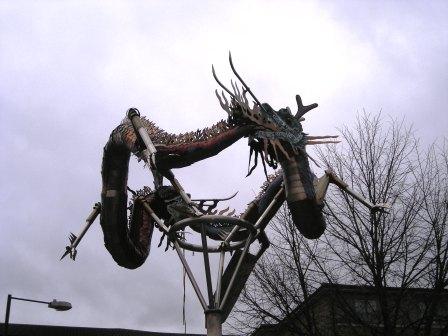
A pair of tin dragon sculpture
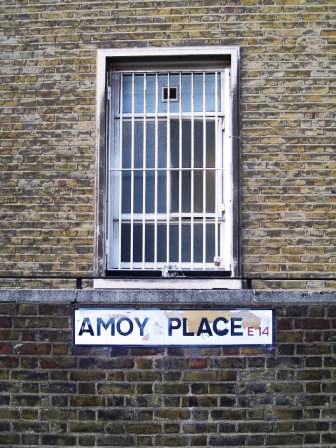

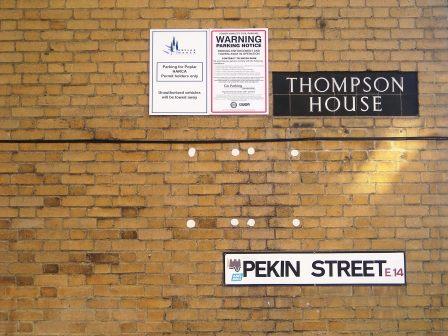
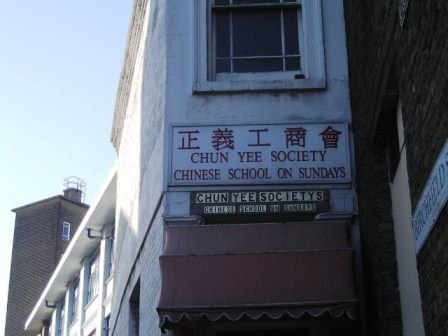
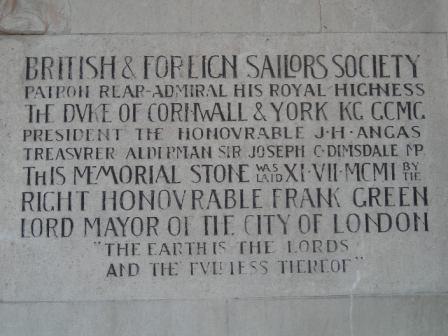

Limehouse Chinatown today
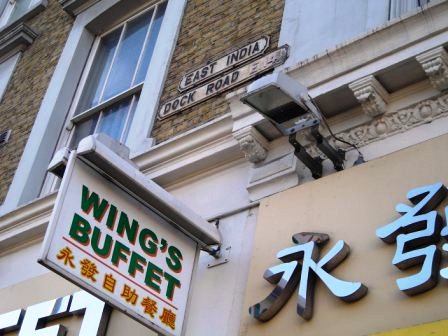
|

 Limehouse Chinatown
Limehouse Chinatown







